Recent Articles
Popular Makes
Body Types
10 Best Full-Size SUVs for 2017

2016 Ford Expedition exterior on road ・ Photo by Ford
Though the market is trending towards smaller SUVs and crossover utility vehicles (CUVs), there are still buyers who need a big, brawny full-size SUV, whether it be to haul an entire Boy Scout patrol or tow a boat to the lake. Here, in (almost) alphabetical order, are the 10 best full-size SUVs on the market for 2017.
2017 Chevrolet Suburban
The Chevrolet Suburban is one of the best-known full-size SUVs on the market, as it should be—Chevrolet has been selling the Suburban since 1935. Like most of the vehicles on this list, the Suburban is essentially a pickup truck with a station-wagon body: It uses durable body-on-frame construction, it’s powered by a big V8 engine, and it offers a part-time 4-wheel-drive system good for off-roading (though the ‘Burb’s size is a hindrance). The Suburban’s extended wheelbase means it can seat up to nine passengers (though most configurations seat seven or eight) and still have plenty of room for luggage. Towing is also a strong point: Depending on configuration, the Suburban can be equipped to tow up to 8,300 lbs, enough to handle decent-sized boats, travel trailers, and horse trailers. Disadvantages: The Suburban uses a lot of fuel, it can be difficult to park, and it doesn’t offer as much third-row space as you’d expect for an SUV this big.
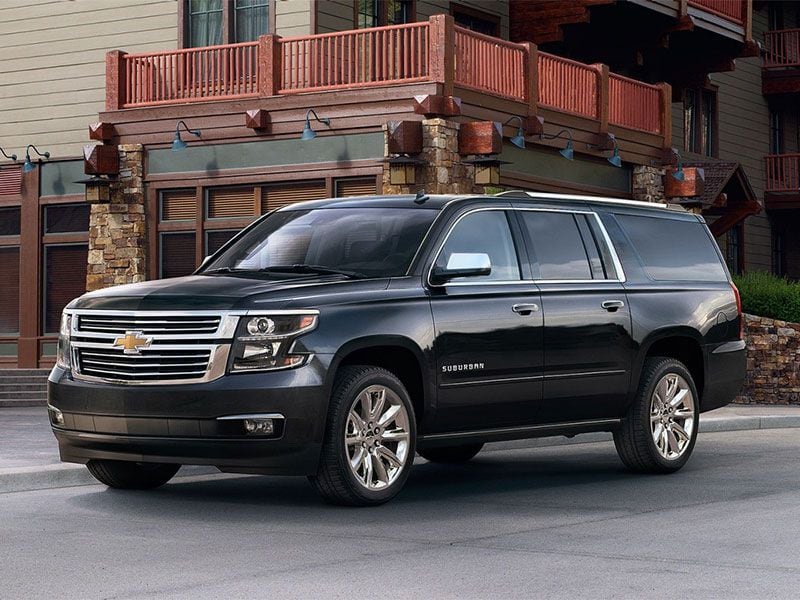
Photo by General Motors
2017 Chevrolet Tahoe
The Tahoe is a close relative of the Chevrolet Suburban—in fact, it’s basically a shorter version, trading luggage capacity behind the third-row seat for shorter length, slightly lighter weight, and, as a result of the latter, more towing capacity (up to 8,600 lbs when properly equipped). Surprisingly, the Tahoe’s third-row seat feels slightly more comfortable than that of the bigger Suburban, but using it reduces luggage space, so the Tahoe is best suited as a 5-seat SUV that needs to double as a towing vehicle. That said, its shorter wheelbase and length also makes it better suited to off-roading than the Suburban, as it has better approach and departure angles and can make its way through tighter spaces.
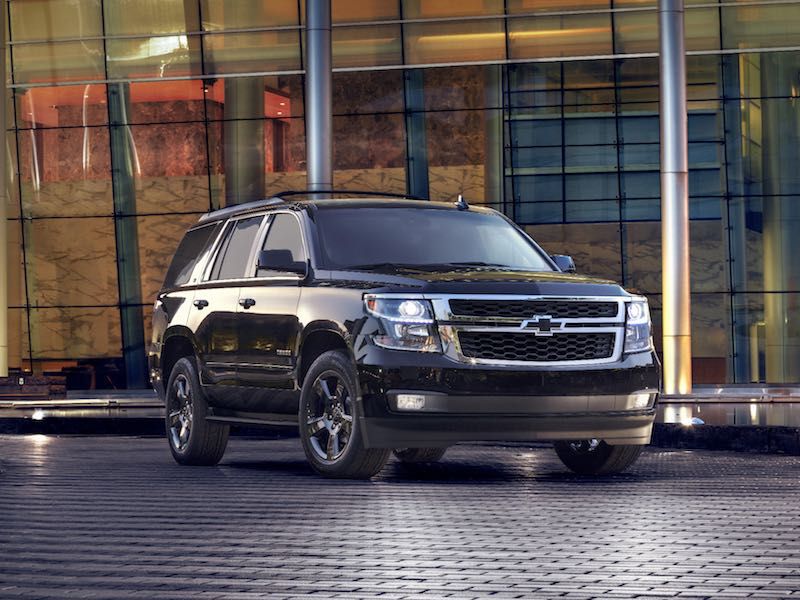
Photo by Chevrolet
2017 GMC Yukon/Yukon XL
Soooo, remember when we said this list was almost in alphabetical order? Here’s why: The GMC Yukon and Yukon XL share most of their mechanical bits with the Chevrolet Tahoe and Suburban, respectively, and we thought it would be nice to group them all together. So why go GMC instead of Chevy? General Motors has positioned GMC as a more upscale brand, and while the Yukons and the Tahoe/'Burb are functionally identical, the GMCs do offer more upscale interiors and a better selection of nice-to-have options. The top-of-the-line Denali models are even nicer. The Yukons also offer GM’s big 420-horsepower 6.2-liter V8, something that isn’t available in the Tahoe and Suburban for 2017 (though it is coming as an option with the 2018 RST package, and with a better transmission than the GMCs get). If you like the functionality of the Tahoe or Suburban but want something a little more upscale, check out the GMC versions.
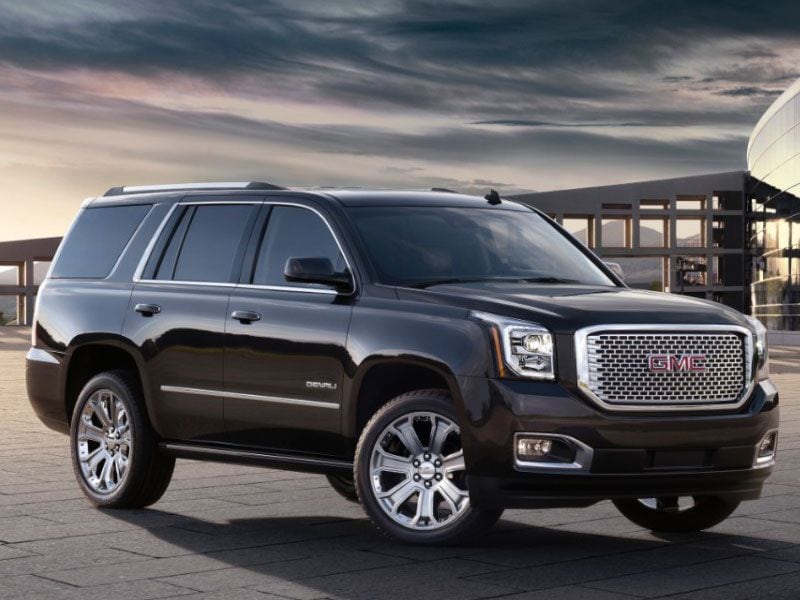
Photo by GMC
2017 Cadillac Escalade
So much for alphabetical order. The Escalade, as you might be able to guess, is an even nicer version of the Tahoe/Suburban and Yukons—the best GM has to offer, with unique styling and a much more upscale interior that replaces GM’s IntelliLink stereo and navigation system with Cadilac’s Cue (a change we aren’t necessarily fond of, by the way). Like its Chevrolet and GMC siblings, the Escalade is available in short and long versions, the latter called the Escalade ESV. Because of its heavier weight, towing capacity is slightly lower, but still significant: 8,300 lbs max for the short-wheelbase version and 8,100 lbs for the longer Escalade ESV. Other than that, it’ll do all the same stuff the Tahoe, Suburban and Yukons will do, but for more money… a lot more money.
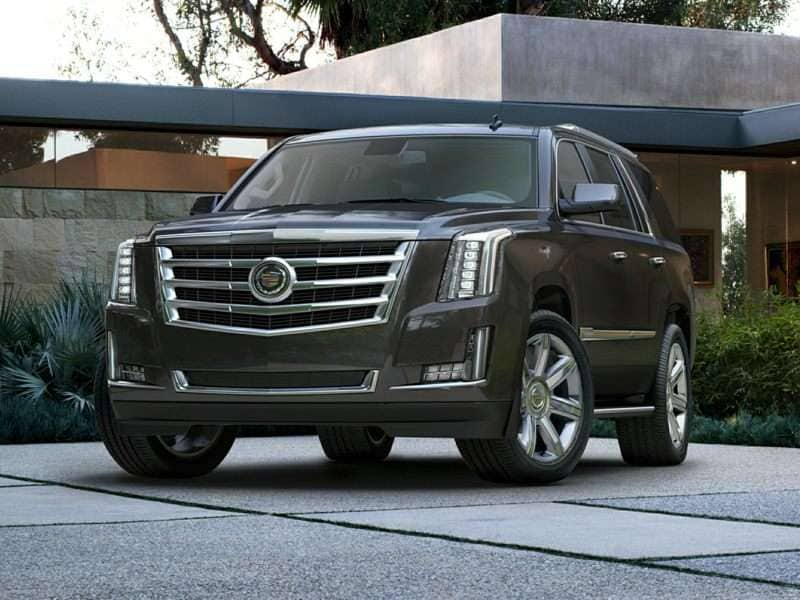
Photo by Cadillac
2017 Dodge Durango
Technically, the Dodge Durango isn’t a full-size SUV, but it does a darn good imitation of one. The Durango straddles the gap between big SUVs like the Tahoe, Yukon and Escalade, and large crossovers like the Honda Pilot, Ford Expedition, and Volkswagen Atlas. The Durango offers a choice of V6 or V8 power, and it tows like the big guys: 6,200 lbs with the V6 engine and 7,400 lbs with the V8. We’ve used it to tow a horse trailer loaded down to 5,000 lbs, and we were impressed by the stability—it’s as good as some full-size pickups. The third-row seat is surprisingly roomy, as well. But the Durango is much easier to drive and park than true full-size SUVs, and the V6 is a bit more fuel-efficient (though admittedly not by much).
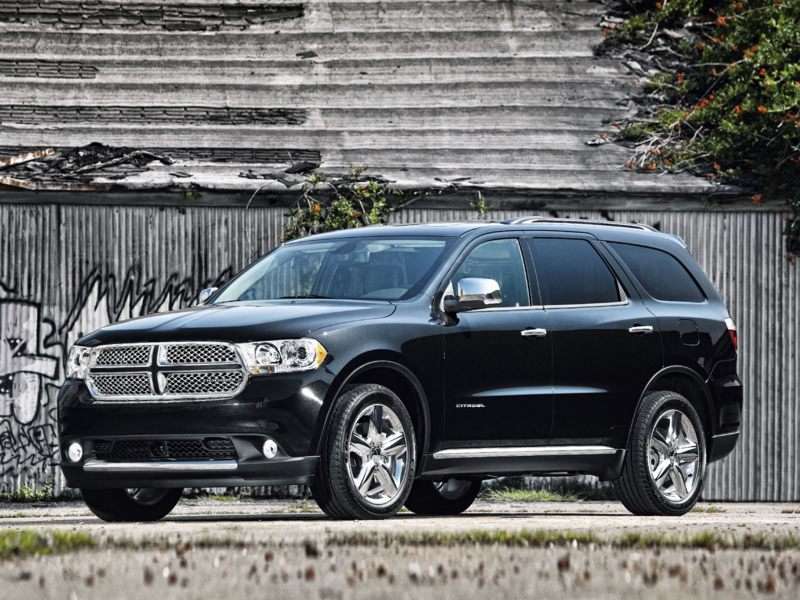
Photo by Dodge
2017 Ford Expedition
The Expedition has been a long-time competitor of General Motors’ full-size SUVs (Suburban, Tahoe, Yukon), but Ford takes a slightly different approach. While the GM SUVs rely on a brawny V8, the Expedition uses a high-tech twin-turbo V6 that promises better fuel economy when it isn’t working hard (which, given this engine’s brawn, is most of the time). And while GM uses a pickup-truck-style live rear axle, the Expedition uses an independent rear suspension, which improves both ride and handling (especially in an emergency swerve). Ford offers both regular- and long-wheelbase versions (Expedition and Expedition EL), and when it comes to towing, the Expedition is about as brawny as you’ll find this side of a pickup truck: It can tow up to 9,200 lbs. So what’s the downside? The 2017 is the last model year for the current version; Ford is planning to replace it with a vastly improved edition for 2018. That said, as the 2018s start rolling in, you should be able to make a great deal on a leftover ’17.
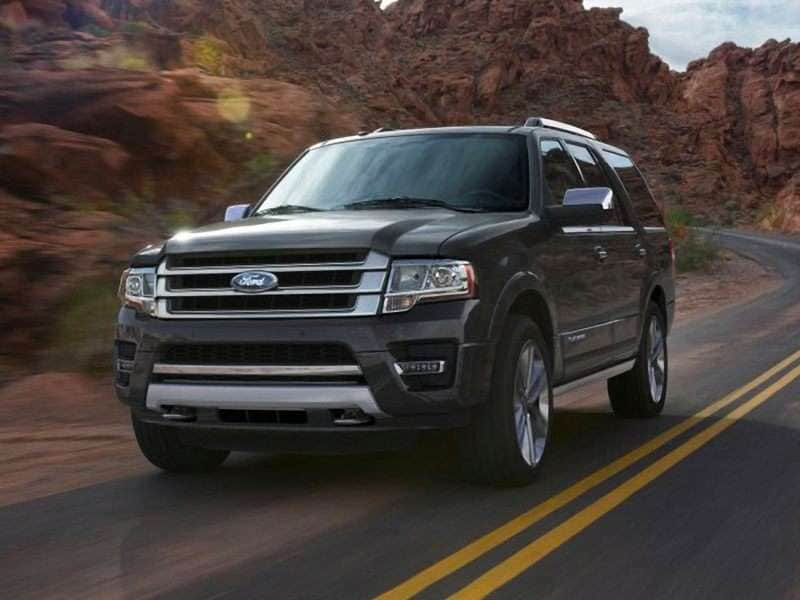
Photo by Ford
2017 Honda Pilot
The Pilot isn’t really a full-size SUV; rather, it’s a large crossover. So what is it doing on this list? If you don’t need the towing capability or off-road abilities of a full-size SUV, we recommend giving a vehicle like the Pilot a good look-see. The Pilot does just as good a job seating seven people as the largest SUVs on this list, but it rides and handles more like a car, and gets better fuel economy to boot. And it’s not the only vehicle of this type; you should also consider the Ford Explorer, the Chevrolet Traverse and Buick Enclave (near-twins—the Buick is more luxurious—that will be replaced for new versions in 2018), and Volkswagen’s new-for-2018 Atlas.
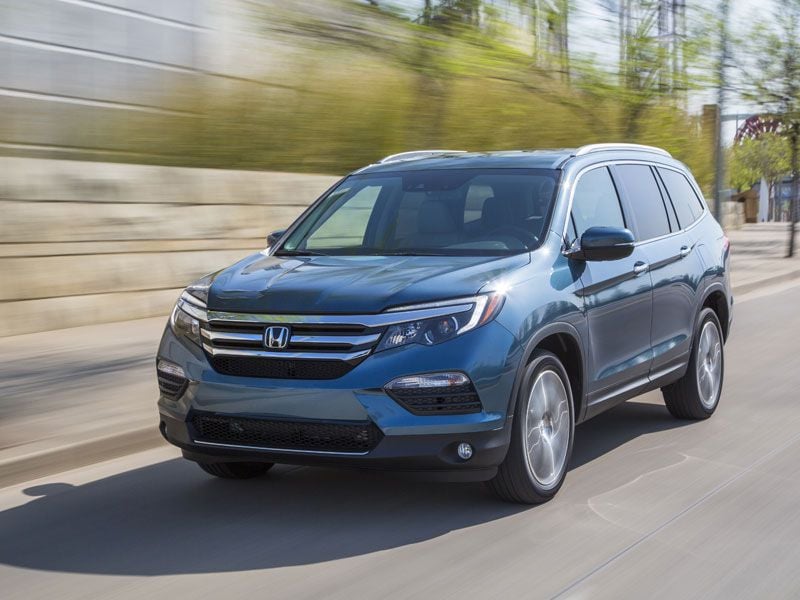
Photo by Honda
2017 Nissan Armada
The Armada is one of the newest full-size SUVs on this list; the Armada nameplate isn’t new, but Nissan has just redesigned it for the 2017 model year. While 2015-and-earlier Armadas (there were no 2016s) were based on the Titan pickup truck, the new Armada is based on the Patrol, a vehicle that Nissan hasn’t previously sold in the U.S. (but has been doing battle with the Toyota Land Cruiser in other markets since time immemorial). The Patrol-based Armada is a good vehicle: It’s smaller than some of the American iron on this list, which makes it easier to park, and while third-row seat space is tight, it’ll tow a healthy 8,500 lbs. With a big V8 engine and hydraulic power steering (a dying breed), it’s quick and very responsive in the turns, and upper trim levels are lavish—more like an Infiniti than a Nissan. The Patrol made its bones as a hard-core off-roader, and while the Armada does well in the rough stuff, we were surprised at the lack of hard-core off-road hardware. Still, if you’re looking for a luxurious vehicle that can tow, the Armada is a great choice.
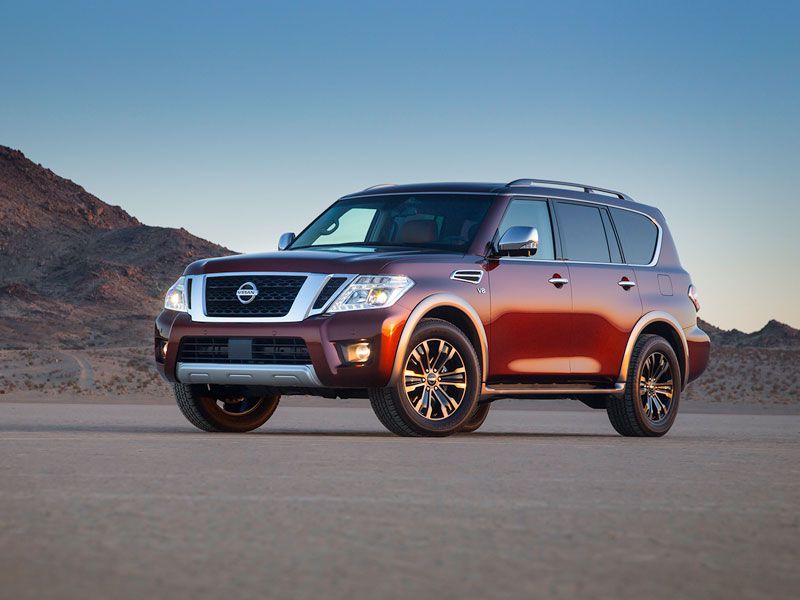
Photo by Nissan
2017 Lincoln Navigator
Just as the Chevrolet Tahoe has its upscale Cadillac Escalade sibling, Ford’s Expedition has the Lincoln Navigator. All of the complements we’ve paid to the Escalade apply to the Navigator: We love the high-tech twin-turbo V6 and competent independent rear suspension, both of which make the Navigator decidedly less truck-like than the Escalade. And like the Expedition, the Lincoln is a towing monster. The one downside is similar to that of the Expedition: Lincoln has a brand-new Navigator waiting in the wings for 2018. It promises to deliver all of the advantages of the current Navi in an even more posh package.
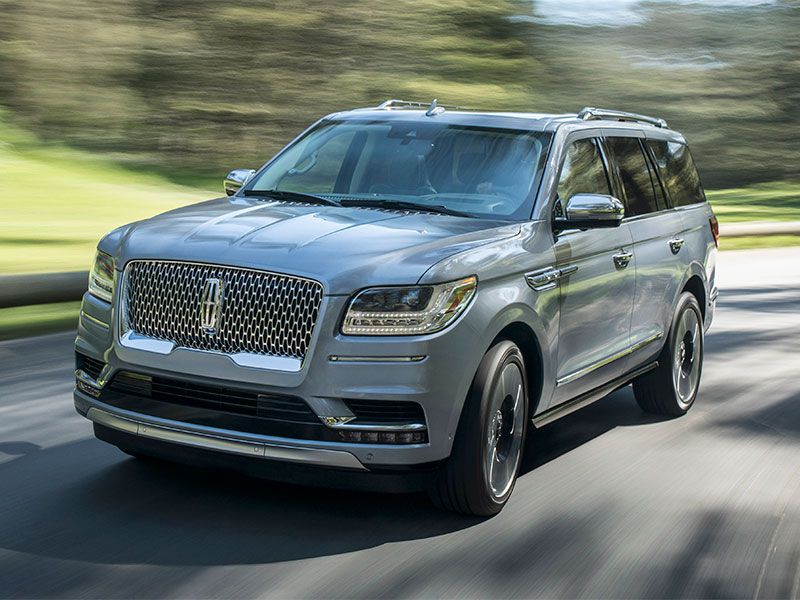
Photo by Lincoln
2017 Toyota Sequoia
Like the tree after which it is named, the Sequoia is big, strong, and long-lived—the current version dates from 2008, making it one of the oldest vehicles on this list. Not that there’s much to complain about: The Sequoia’s 5.7-liter V8 engine gives it plenty of muscle, and it can tow up to 7,400 lbs. Interior space is good as well. But the Sequoia is showing its age, especially in the interior—it looks dated, with instrumentation and chunky switchgear lifted from the decade-old Tundra pickup truck. (The Tundra got a new interior for 2014, but the Sequoia didn’t.) Toyota will be adding a rugged TRD Pro version of the Sequoia for 2018, which is about the most interesting thing we can say about it. There’s nothing wrong with the Sequoia, but compared to the other trucks on this list, there’s not much to make it stand out.
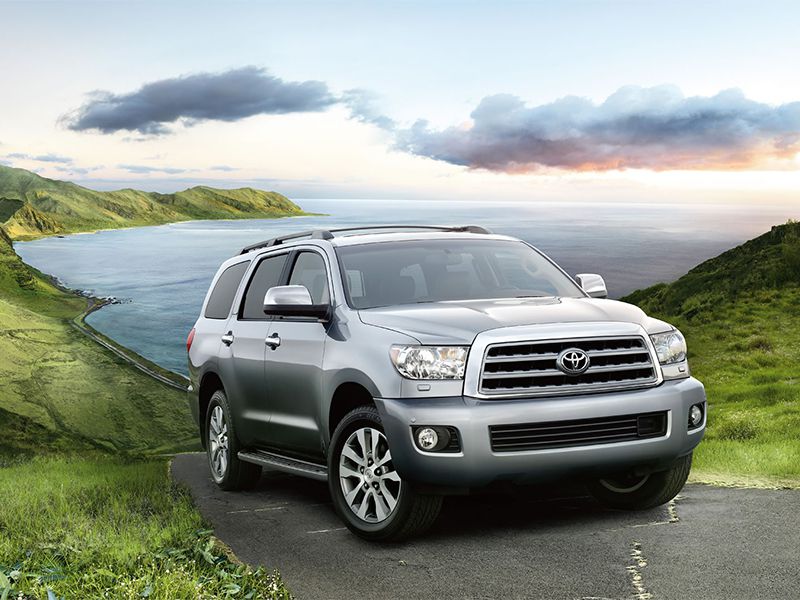
Photo by Toyota